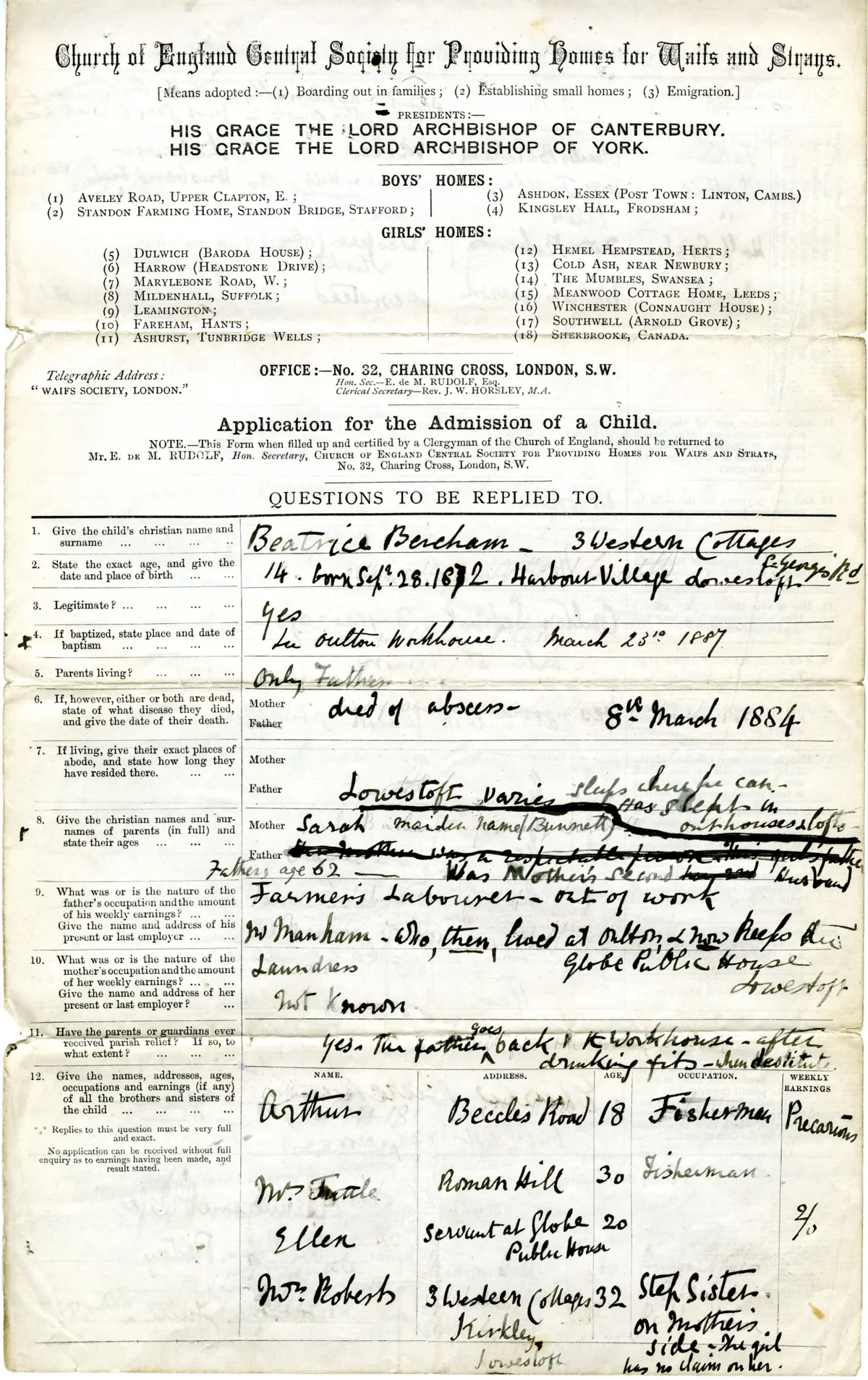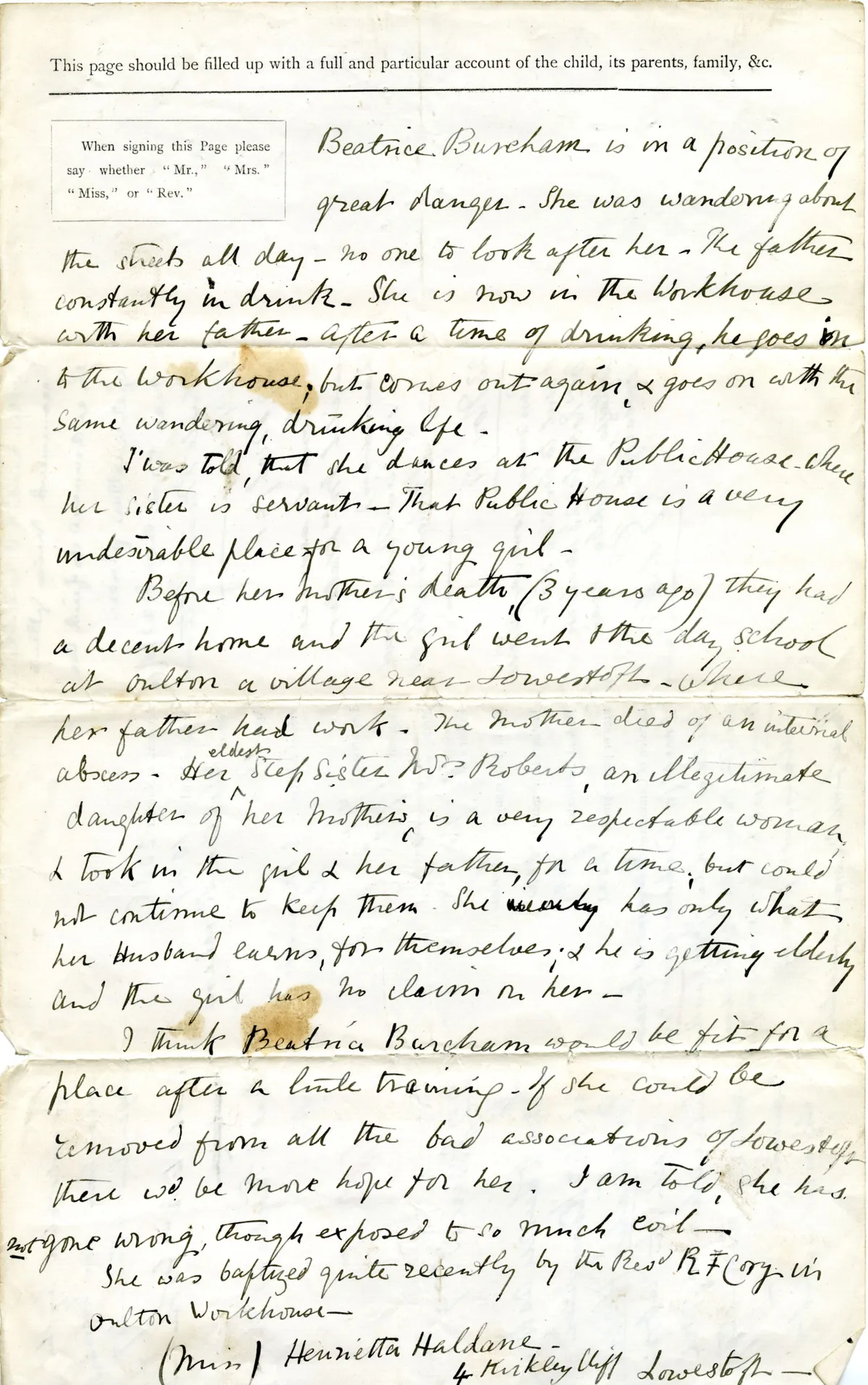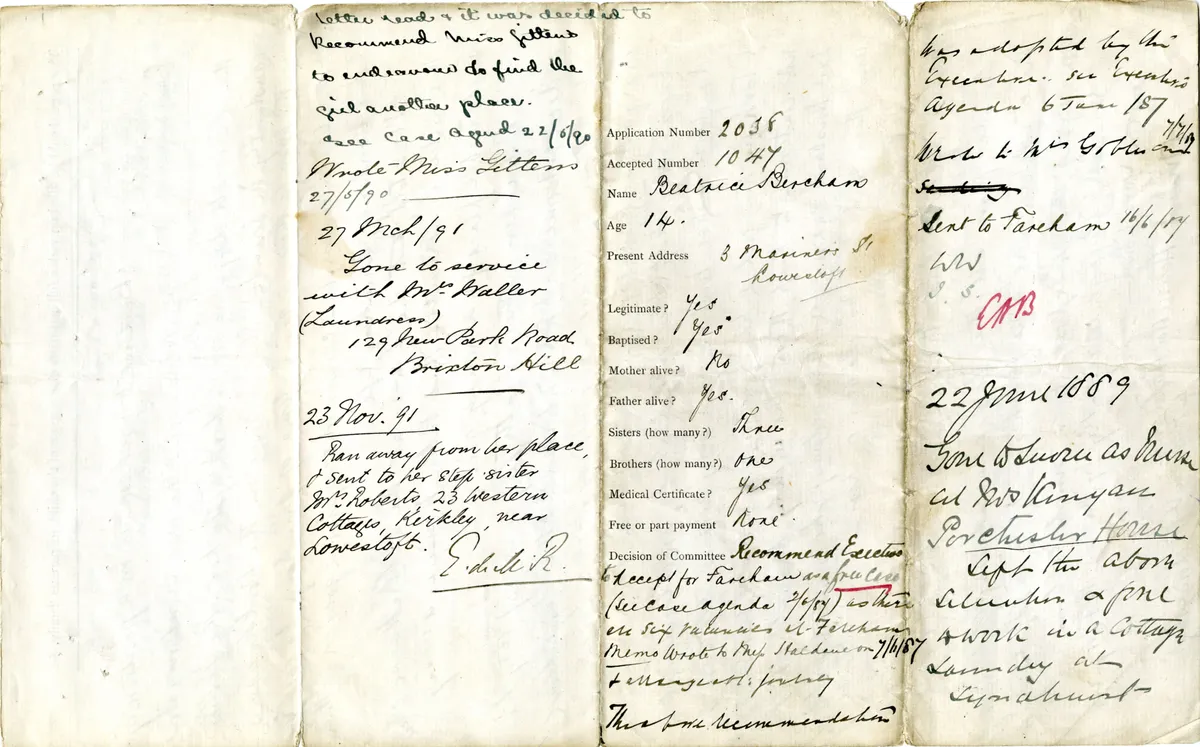From London’s Foundling Hospital opened in 1741, through the workhouse and the voluntary and faith-based homes established in Victorian times, to council-run accommodation in the 20th century, children’s homes and orphanages include a wide variety of institutions, and locating their records can be difficult.
Even the word ‘orphan’ can be misleading – a child who had lost only one parent, especially the father, could be viewed as an orphan. And a so-called orphanage might take in children whose parents were both still alive.
The first step is to identify the institution(s) where your ancestor once resided, but this can be tricky. Larger towns and cities might have had several, sometimes short-lived, children’s homes whose names could be similar. Children could be transferred between homes and, over the years, institutions were sometimes renamed or relocated. Occasionally, streets were also renamed.
Hopefully, you at least know the county or town where your forebear’s home was located. Even if you first encounter a home via a census listing, its identity or character may not be immediately clear since the names that census enumerators gave institutions could be terse or cryptic.
My site Children’s Homes can help you browse the details of institutions in a particular area, often providing photos and maps that may jog the memories of former inmates. Historical directories, such as Kelly’s, frequently include a “Homes” section listing such establishments. A good free source is the University of Leicester’s website Special Collections Online, while commercial sites such as Ancestry and Findmypast are increasingly adding historical directories.
In addition, old Ordnance Survey maps often identify orphanages and children’s homes, and many are digitised on the National Library of Scotland’s map site.
How to find records for children's homes
Locating any records for children’s homes can often prove frustrating. Most homes were privately operated, and frequently the organisation(s) that once ran them no longer exist.
Fortunately there are several useful websites that can help you find the records that you need. The aforementioned Children’s Homes website summarises the records available for hundreds of institutions, The National Archives’ online catalogue Discovery includes the catalogues of more than 2,500 local archives in England and Wales, and Archives Hub provides details of more than 350 specialist UK archives.
When using the search facility of such websites, be prepared to try different versions of the name and location of the home that you’re looking for, eg ‘cheshire girls orphanage’ or ‘railway home crewe’.
It’s important to remember that records less than 100 years old may be closed for access for privacy reasons, although archives may be prepared to provide researchers with information about their own records or those of their deceased relations, subject to proof of identity being supplied.
How to get records from Barnardo's and other charitable children's homes
Many children’s homes were run by national or local charitable or voluntary groups. Some still exist, although they have often been renamed; for example the National Children’s Home (NCH) has become Action for Children.
Some now operate research services, including Action for Children, Barnardo’s and The Children’s Society (formerly the Church of England Waifs and Strays Society). You can find out more about the Children's Society via its Hidden Lives website, including photographs and a selection of pre-WW1 case files.
Some charities and occupational groups have now passed their records to public archives. For example, the records of Shaftesbury Young People (the former Shaftesbury Homes) and Coram (the former Foundling Hospital) are now at the London Metropolitan Archives, and those from the Merchant Seamen’s Orphan Asylum are held by Berkshire Record Office.
The survival of records for smaller independent homes is generally limited, and more likely to feature administrative documents than inmates’ details. After giving up running homes, some organisations became charitable trusts and may still hold records but not be geared up for research inquiries. The Charity Commission’s website may help you to identify such bodies.
A few voluntary home records (or transcriptions) may now be viewed via commercial websites, for example Findmypast has the collection ‘Derbyshire, Derby Railway Servants’ Orphanage Registers, 1875–1912’ and Ancestry has some from the Royal Female Orphanage, Beddington.
Religious children's homes
As well as the Methodist-supported NCH and the Church of England’s Waifs and Strays Society, children’s homes were operated by various other religious groups including the Salvation Army, the Quakers, the Jewish community, and – the most active in this field – Roman Catholic organisations and orders.
Prominent among the Catholic orders were the Sisters of Nazareth and the Daughters of Charity of St Vincent de Paul. Some Catholic homes were organised within Catholic diocesan areas and run by a diocesan children’s (or ‘rescue’) society, often in conjunction with a religious order. Where the society or order is still active, it may hold records for its homes. Alternatively, records may have been placed in the relevant Catholic diocesan archives. For more information on faith-based homes, diocesan archives and societies, religious orders etc see childrenshomes.org.uk/research/religious.shtml.
How to find records for local authority children's homes after 1948
Following the 1948 Children Act, local councils established children’s departments to run children’s services. In 1971, these were absorbed into new social-services departments. Prior to 1991, councils were not legally required to retain the records of children leaving care, so their survival is very variable. Older records may now be held by the relevant local record office and appear in the Discovery database but be flexible when searching the home by name or address as these sometimes changed over time.
Recent records for council-run homes are most likely to be held in each council’s internal archive. The Care Leavers’ Association has a list of the contact details for local authorities.




